

Wilcom Portable. Product Info - Create embroidery inside CorelDRAW. Embroidery i2 for CorelDRAW® A dream-come true technlogy, Embroidery i2 for CorelDRAW®, is a software plug in for CorelDRAW® that creates embroidery inside the graphics program.
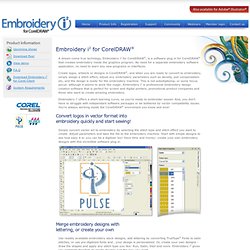
Illustrator - Create embroidery inside Adobe Illustrator. TYPE DINGBAT 世界の絵フォントコレクション. 商品の説明 内容紹介 花も動物も飛行機もアイコンも……ぜ~んぶフォントで!!
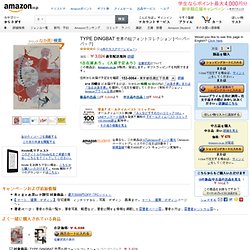
イラストをフォントデータとしてパッケージした「絵フォント」=「DINGBAT(ディングバット)」だけを集めた、新感覚フリーフォント集の誕生です。 世界中から集めたDINGBAT 140 書体を、試してみたくなるおしゃれなレイアウトで紹介、付属CD-ROM にはフォントデータを収録しています。 デザインワークはもちろん、プライベートにビジネスに、インストールしてキーボードを叩くだけのカンタン素材集として活用できます。 内容(「BOOK」データベースより) 素材につかう新感覚フリーフォント集。 最も参考になったカスタマーレビュー 7 人中、7人の方が、「このレビューが参考になった」と投票しています。 5つ星のうち 5.0面白いです 2009/10/3 キッズレビュー 形式:ペーパーバック. PatternMaker: Home. Hardanger embroidery. Example of modern Hardanger embroidery work Hardanger embroidery or "Hardangersøm" is a form of embroidery traditionally worked with white thread on white even-weave cloth, using counted thread and drawn thread work techniques.
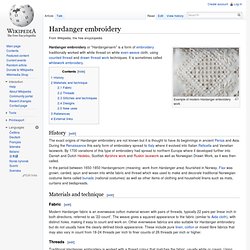
It is sometimes called whitework embroidery. History[edit] The exact origins of Hardanger embroidery are not known but it is thought to have its beginnings in ancient Persia and Asia. During the Renaissance this early form of embroidery spread to Italy where it evolved into Italian Reticella and Venetian lacework. In the period between 1650-1850 Hardangersom (meaning: work from Hardanger area) flourished in Norway. Drawn thread work.
Linen towel with drawn thread work accented with embroidery in stem and satin stitch Styles[edit] Linen handkerchief decorated with three rows of hemstitching.
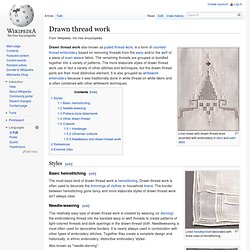
Ponchados Mexico - Servicio de Ponchado de Logos Computarizado para Bordado Express. Used embroidery machines, screen printing equipment, digitizing software. Goldwork (embroidery) Goldwork, Uniform Goldwork, Spain, 20th century.
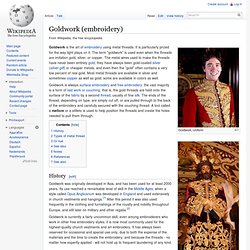
Henna. Henna (Lawsonia inermis, also known as hina, the henna tree, the mignonette tree, and the Egyptian privet)[1][2] is a flowering plant and the sole species of the Lawsonia genus.

The English name "henna" comes from the Arabic حِنَّاء (ALA-LC: ḥinnāʾ; pronounced [ħɪnˈnæːʔ]) or, colloquially حنا, loosely pronounced as /ħinna/. The name henna also refers to the dye prepared from the plant and the art of temporary tattooing based on those dyes (see also Mehndi). Embroidery Treasures. Latte Quilt class starting in October!
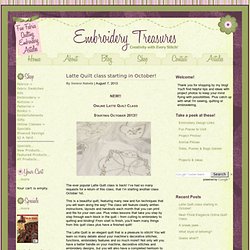
By Serena Nabeta | August 7, 2013 Online Latte Quilt Class Starting October 2013!! The ever popular Latte Quilt class is back! I’ve had so many requests for a return of this class, that I’m starting another class October 1st. This is a beautiful quilt, featuring many new and fun techniques that you will learn along the way! Bordados y ponchados publicitarios en MercadoLibre México - Donde comprar y vender de todo. LadyPens - Ponchados personalizados servicio urgente toda en MercadoLibre México - Donde comprar y vender de todo. Royal School of Needlework - Keeping the art of hand embroidery alive. Blanket stitch. History[edit] A merrow industrial crochet machine This stitch has long been both an application by hand and as a machine sewn stitch.

When done by hand, it is sometimes considered a crochet stitch, used to join pieces together to make a blanket or other larger item. Broderie Anglaise. Broderie anglaise (French, "English embroidery") is a whitework needlework technique incorporating features of embroidery, cutwork and needle lace that became associated with England, due to its popularity there in the 19th century.
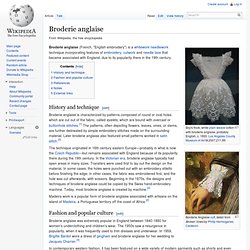
History and technique[edit] Broderie anglaise is characterized by patterns composed of round or oval holes which are cut out of the fabric, called eyelets, which are bound with overcast or buttonhole stitches.[1] The patterns, often depicting flowers, leaves, vines, or stems, are further delineated by simple embroidery stitches made on the surrounding material. Later broderie anglaise also featured small patterns worked in satin stitch.[2] The technique originated in 16th century eastern Europe—probably in what is now the Czech Republic—but remains associated with England because of its popularity there during the 19th century.
In the Victorian era, broderie anglaise typically had open areas in many sizes. Welcome to House of Lime. LilyPad Embroidery. The outcome is simple and familiar, the execution, on the other hand, is poetic in so many levels.
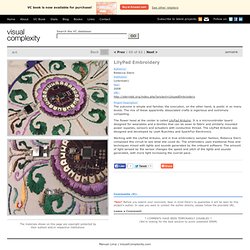
The mix of these apparently dissociated crafts is ingenious and extremely compelling. The flower head at the center is called LilyPad Arduino. It is a microcontroller board designed for wearables and e-textiles that can be sewn to fabric and similarly mounted power supplies, sensors and actuators with conductive thread. The LilyPad Arduino was designed and developed by Leah Buechley and SparkFun Electronics.
Working with the LilyPad Arduino, and in true embroidery sampler fashion, Rebecca Stern composed this circuit to see what she could do. Suzani textile. Suzani is a type of embroidered and decorative tribal textile made in Tajikistan, Uzbekistan, Kazakhstan and other Central Asian countries. Suzani is from the Persian سوزن Suzan which means needle. The art of making such textiles in Iran is called سوزنکاری Suzankāri (needlework). The oldest surviving suzanis are from the late 18th and early 19th centuries, but it seems likely that they were in use long before that.
In the early 15th century, Ruy Gonzáles de Clavijo, the Castilian ambassador to the court of Timur (Tamerlane), left detailed descriptions of embroideries that were probably forerunners of the suzani. [2] Suzanis were traditionally made by Central Asian brides as part of their dowry, and were presented to the groom on the wedding day. [3]